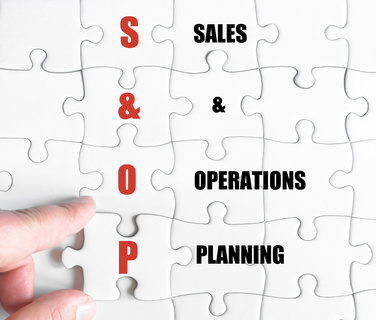SIOP (Sales, Inventory, Operations Planning) should not be relegated to the Planning Department. Although the planning group is a key participant and might lead the process, SIOP touches upon several strategic issues as well as create alignment with Sales, Operations, R&D/ New Product Development, Finance, Purchasing, and more. As a CEO, you must become interested!
We have worked on countless SIOP projects with clients across industries as diverse as building products, food and beverage, healthcare, and aerospace, and it has proven to be the most effective at achieving the win-win-win of enabling growth while maximizing service, cash flow (inventory) and profit. For example, at one aerospace client, we put the fundamentals in place to support SIOP (scheduling, planning systems MRP/MPS, forecasting) and then rolled out a SIOP process involving all key aspects of the organization. Although our objective was to bring service levels from the 60%’s to the high 90%s, we accomplished not only that metric but we also improved margins by 5% and increased morale and engagement. What’s not to like with these results!
Critical Aspects of SIOP
Let’s start with just those elements that are most important to achieving results:
- Can you get executives involved? Of course, it is better to gain executive involvement upfront; however, I have found that it is quite doable to gain the involvement over time as well. For example, in one client situation, a key executive was not on board at any level at the start, and so as we rolled out a pilot process, and we convinced him to give the process a try. Once he sat in on the executive SIOP meeting, he become more interested because strategic issues arise such as make vs. buy, changes in sourcing, impacts to sales strategies and more.
- What do you have to do to get directionally correct information for making? By NO means do you need perfect information; in fact, if you wait for perfect information, your decision will be long past. Yet directionally correct information is imperative so that you can make fact-based decisions and/or gain approval from corporate or your Board for what you know must be done to succeed. I cannot think of a client situation where I couldn’t gain access to at least directionally correct information after an assessment, no matter how ancient their ERP system.
- Will you involve all relevant departments in the SIOP process? If you focus on data and not the people, you will not succeed. The 80/20 of success is to bring typically disparate groups together to align on 1 plan/ path forward. It is much easier to say than to accomplish, and so those clients that do this well have a far higher success rate than the rest. You should involve Planning, Purchasing, Operations, Logistics, Customer Service, Sales, Finance, New Product Development, and any key area of your operation.
SIOP is not a quick resolution; however, you can make quick interim progress. Similar to safety, it must become part of your day-to-day culture. As business conditions change, roadblocks naturally arise through the process. We’ve found that they have a FAR higher chance of being averted or minimized when they arise as part of the process instead of related to one person or department who typically is seen as the “problem”. Strategic issues also arise naturally through the process so that they are proactively addressed instead of resulting in a reactionary panic. To read more about how to implement SIOP, read our book, SIOP (Sales Inventory Operations Planning): Creating Predictable Revenue and EBITDA Growth.
You can start the SIOP journey with an assessment of readiness with recommendations for improvement. Several clients have started with this approach so that they knew which building blocks to put in place and whether the benefits would drive a substantial return on investment at this juncture. If you are interested in this type of assessment, contact us.



